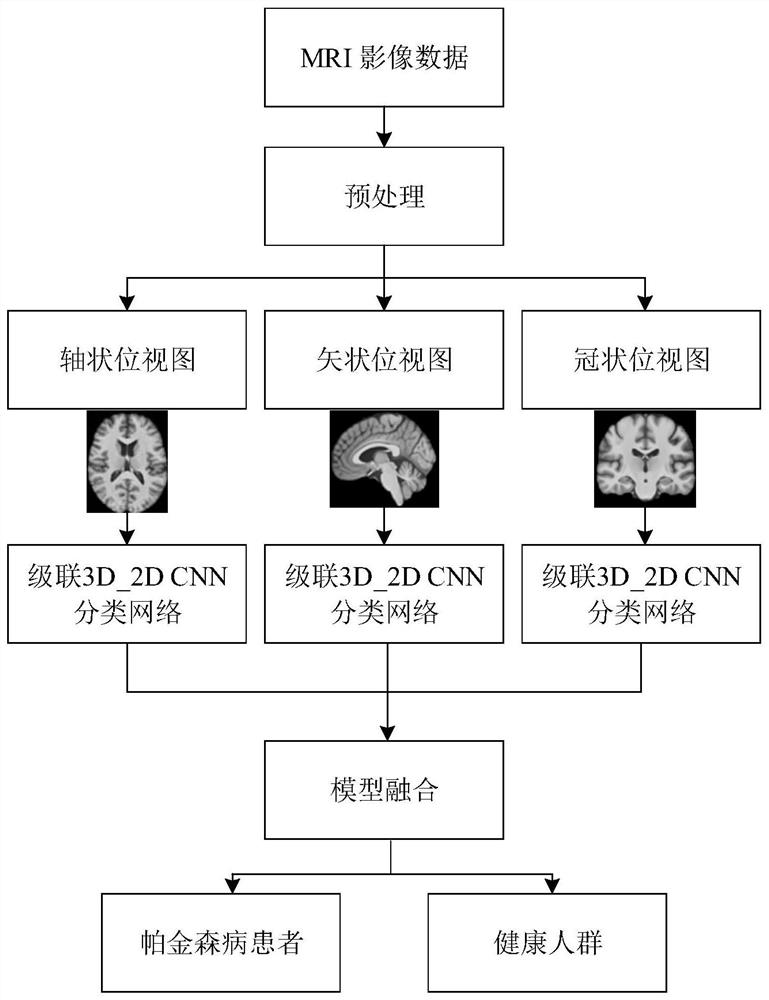Brain image classification method and device based on magnetic resonance imaging and deep learning
A magnetic resonance imaging and deep learning technology, applied in image analysis, image enhancement, image data processing, etc., can solve problems such as high memory usage and computational cost, increase the difficulty of model optimization, and cannot provide enough information, and achieve enhanced local details. Information, high classification accuracy and stability, and the effect of reducing computational complexity and parameter quantity
- Summary
- Abstract
- Description
- Claims
- Application Information
AI Technical Summary
Problems solved by technology
Method used
Image
Examples
Embodiment 1
[0046] like figure 1 As shown, the present embodiment provides a brain image classification method based on magnetic resonance imaging and deep learning, comprising the following steps: obtaining the original MRI scan image data to be classified, performing preprocessing, and obtaining a three-dimensional MRI image; As the input of a trained classification network model, the final classification result is obtained. Among them, the classification network model performs 3D to 2D feature dimension conversion on the 3D MRI images along the axial plane, sagittal plane and coronal plane, and classifies them through the axial base classifier, sagittal base classifier and coronal base classifier respectively. obtain the corresponding initial classification results, and then integrate and fuse multiple initial classification results to obtain the final classification results. The axial base classifier, sagittal base classifier and coronal base classifier are cascaded with the same stru...
Embodiment 2
[0086] This embodiment provides an electronic device, including one or more processors, memory, and one or more programs stored in the memory, one or more programs including for performing the magnetic resonance-based Instructions for Brain Image Classification Methods for Imaging and Deep Learning.
PUM
 Login to View More
Login to View More Abstract
Description
Claims
Application Information
 Login to View More
Login to View More - R&D
- Intellectual Property
- Life Sciences
- Materials
- Tech Scout
- Unparalleled Data Quality
- Higher Quality Content
- 60% Fewer Hallucinations
Browse by: Latest US Patents, China's latest patents, Technical Efficacy Thesaurus, Application Domain, Technology Topic, Popular Technical Reports.
© 2025 PatSnap. All rights reserved.Legal|Privacy policy|Modern Slavery Act Transparency Statement|Sitemap|About US| Contact US: help@patsnap.com



